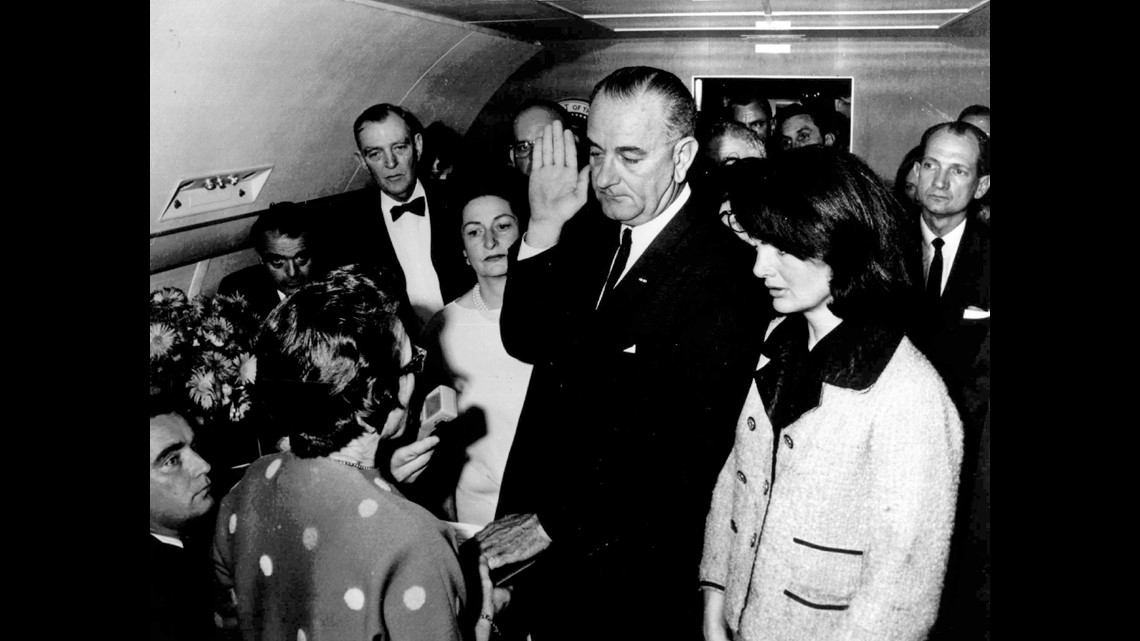WASHINGTON — QUESTION:
Has the inauguration always been held at the Capitol?
ANSWER:
No. The inauguration has been at places besides the Capitol before. George Washington and John Adams were inaugurated outside of D.C. since the Capitol was not yet constructed.
Franklin D. Roosevelt was inaugurated for his fourth term in 1945 at the White House, amid World War II. Various other presidents have had small swearing-in ceremonies, following the death of their predecessor.
Other than deaths or resignations, over the last 200 years, only the 1945 example broke from the tradition of holding the inauguration at the Capitol.
SOURCES:
- Allan Lichtman, Distinguished Professor of History at American University
- Joint Congressional Committee on Inaugural Ceremonies (JCCIC), "Past Inaugural Ceremonies"
- Architect Of The Capitol, "Inauguration At The U.S. Capitol"
PROCESS:
Following the Capitol riot on January 6, there has been a growing level of concern from both city leaders and federal law enforcement about inauguration security. On social media, many are calling for drastic changes to the inauguration planning.
"Clearly they need to move the inauguration to a secure and secret location," wrote one user.
Many on social media were calling for the event to be moved from the Capitol, or at least moved inside.
The Verify team spoke with Allan Lichtman, a distinguished professor of history at American University, to break down whether past inaugurations have been held away from the Capitol before.
"It has been moved," he said. "It has happened before."
Here's a breakdown of some past inaugurations, held away from the Capitol.
The early history of inaugurations
In the early days of American democracy, the Capitol was not yet constructed. For this reason, inaugurations were held elsewhere.
According to the Joint Congressional Committee on Inaugural Ceremonies (JCCIC), the first inauguration of George Washington was held on April 30, 1789 on the balcony of Federal Hall in New York City.
Four years later, on March 4, 1793, Washington was sworn in for his second term at the Senate Chamber at Congress Hall, which was located in Philadelphia, PA. During this inauguration, Washington delivered the shortest inaugural address at just 135 words.
On March 4, 1797, John Adams was inaugurated in the House of Representatives Chamber at Congress Hall in Philadelphia, PA. This was the final inauguration that took place in Pennsylvania.
What about swearing-in after deaths or resignations?
Various presidents have been sworn in at locations other than the Capitol out of necessity. This includes those, sworn in after the death or resignation of their predecessor.
On April 6, 1841, John Tyler was sworn in at the Brown's Hotel on 6th St. and Pennsylvania Ave. NW. This followed the death of President William Henry Harrison, who died on just his 32nd day in office.
On April 15, 1865, yet another death shocked the nation. Abraham Lincoln was assassinated by John Wilkes Booth. After his death, Andrew Johnson was sworn in at the Kirkwood Hotel, on 12th St. and Pennsylvania Ave. NW.
Here are a few of the other swearing-in locations, for those following a death or resignation:
- Chester Arthur: 123 Lexington Ave., Chester Arthur's Private Residence in New York, NY (1881)
- Theodore Roosevelt: Ansley Wilcox Residence in Buffalo, NY (1901)
- Calvin Coolidge: His Father's Residence in Plymouth, VT (1923)
- Harry Truman: White House (1945)
- Lyndon B. Johnson: Conference Room Aboard Air Force One in Dallas, Texas (1963)
- Gerald Ford (Following the resignation of President Nixon): The White House (1974).


"That's one of the iconic images of American history," said Lichtman, in regards to the photo of Lyndon B. Johnson being sworn in, captured by the Associated Press.
When was the last time inauguration wasn't held at the Capitol?
Other than deaths or resignations, the tradition of holding the inauguration at the Capitol has been broken just one time in the last 200 years. This was during the inauguration of 1945.
On January 20, 1945, Franklin D. Roosevelt, was sworn in to his fourth term at the White House, rather than the Capitol.
"That was wartime," said Lichtman. "So it was seen as expedient at the White House."
The JCCIC noted the same on their online records:
"(He) had a simple Inaugural Ceremony at the White House; At the height of WWII, Franklin D. Roosevelt's fourth Inauguration was simple and austere with no fanfare or formal celebration following the event. There was no parade because of gas rationing and a lumber shortage."
Can you move the inauguration indoors?
Over American history, the exact location of the inauguration has moved around the building. In the early days of American history, these events were held in the Senate or House chambers.
- On March 4, 1829, Andrew Jackson was sworn in on the East Portico of the U.S. Capitol, the first time this had been done. For many decades, this would become the norm for incoming presidents.
- On January 20, 1981, Ronald Reagan held his inauguration on the West Front of the U.S. Capitol, which was a first. For the most part, this new tradition has stuck, as every incoming president has held their inauguration there as well.
The inauguration of 1985 proved to be the sole exception. According to the JCCIC, this was the "coldest inauguration day on record, with a noon temperature of 7 degrees."
For that reason, Reagan was privately sworn-in that day at the White House. The public inauguration was held the next day in the Capitol Rotunda to avoid the freezing temperatures.
Lichtman said that there's no reason the 2021 inauguration could not be moved indoors, amid security threats.
"Given that as recently as 1985 it was held indoors," he said. "I don't really see any problem with moving it indoors."

